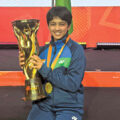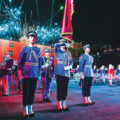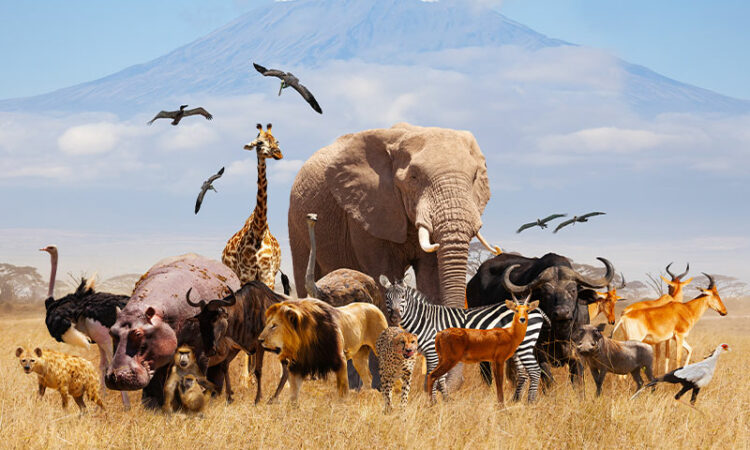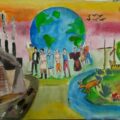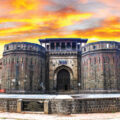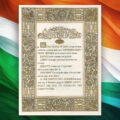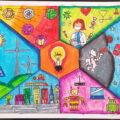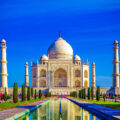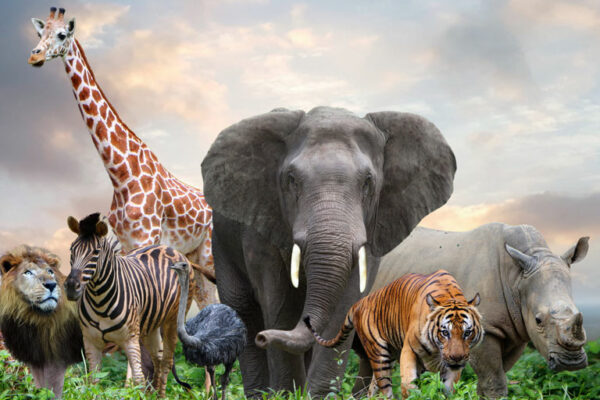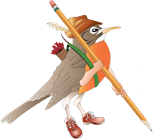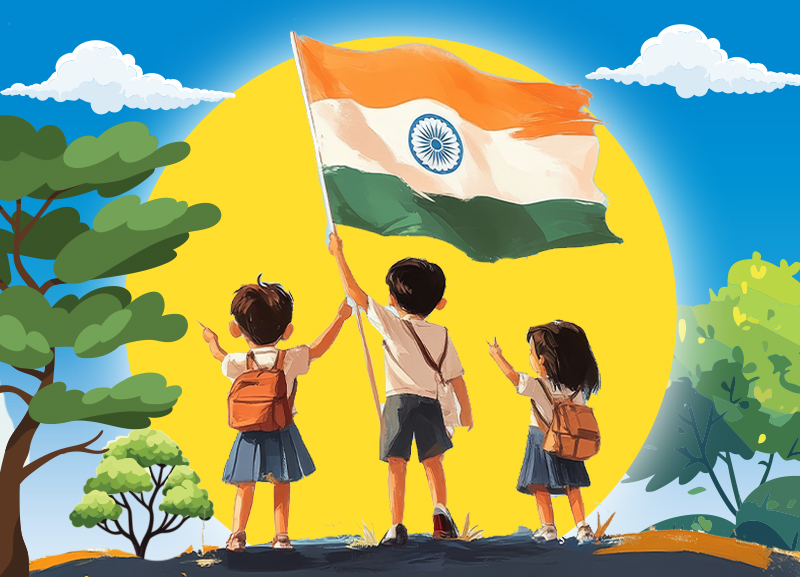
August 01, 2025
Undoubtedly, modern India is the legacy of the freedom struggle. It is a result of generations of sacrifice, fearlessness, courage and unity. Our Indian Armed Forces are responsible for ensuring the defence of India and its people, and they are indeed doing a splendid job of ensuring we remain a sovereign republic. Today, many children and young adults aspire to join the Indian Armed Forces, one of the world’s most powerful militaries.
As we get ready for Independence Day celebrations, ANU CHAWLA, author of ‘Padma Shri Awardees’, tells you more about India’s progressive journey through the years.
The Anti-colonial Struggle
The century-long period (1857 to 1947) of British rule in India was resisted by generations. India’s freedom struggle was undoubtedly one of the most significant mass movements against colonial rule. It was truly a people’s movement, a national movement led by various reformers and guided by their principles. It inspired many other nations to modify their socio-political structure. The movement included armed resistance, mass civil disobedience and non-violent protests for a common goal—freedom from British rule.
The visionaries, revolutionaries and advocates of independence, such as Mohanlal Karamchand Gandhi, Bal Gangadhar Tilak, Lala Lajpat Rai, Bipin Chandra Pal, Bhagat Singh, Chandrashekhar Azad and many others, dreamt of a democratic, secular Bharat—a dream that became a nightmare for the British monarchy and its troops!
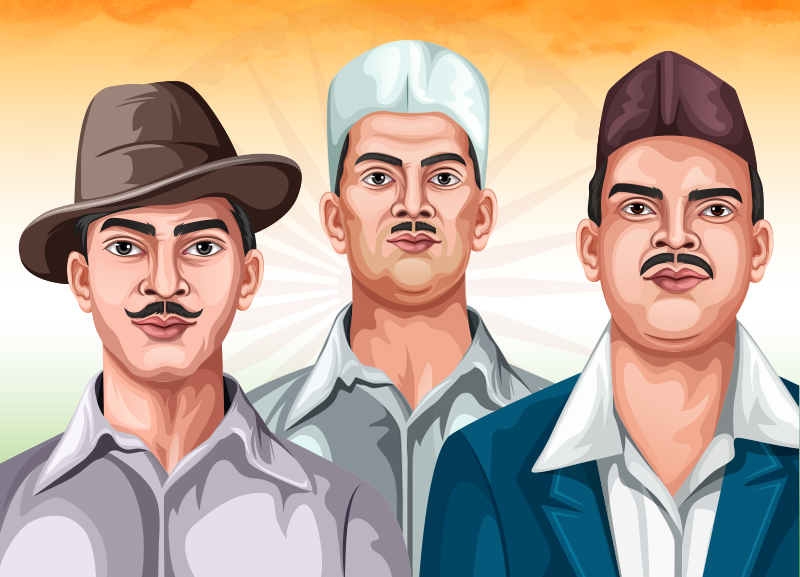
The First War of Indian Independence
The Revolt of 1857, commonly known as the First War of Indian Independence, sparked the national movement. Years of exploitation by the British resulted in protests by Indian soldiers (sepoys) in the British army. This protest against the East India Company wasn’t just for their mistreatment, underpaying workers or misusing India’s natural or financial resources; the primary cause was their lack of religious sensitivity, or what came to be known as the greased cartridge incident.
In 1857, the British introduced a new rifle called the Enfield rifle. To use it, sepoys had to bite open paper cartridges greased with fat. Hindu soldiers believed the cartridges were greased with cow fat, an animal sacred to Hindus, while Muslim soldiers believed it was pig fat, an animal forbidden in Islam. This was deeply offensive to both communities. Although the revolt was suppressed, it encouraged the British government to consolidate its power and take direct control over India in 1858, thereby completely removing Indian participation in governance. This further outraged Indians, leading to a strong desire for a national independence movement. But British rule persisted!
Annals of 1947
In 1885, the sentiments and situation began to change after the formation of the Indian National Congress (INC). INC promoted the free exchange of ideas and opinions within the party and offered a platform for political discourse and development. Its key members included ‘moderates’ like Dadabhai Naoroji, Surendranath Banerjee, Badruddin Tyabji, Pherozeshah Mehta and a few others who believed in constitutional reforms. It was difficult to oppose communalism, so the party wasn’t too demanding and initially adopted a less assertive stance.
However, the Partition of Bengal in 1905 by Viceroy Lord Curzon added fuel to the fire. The partition was perceived as the British government’s divide-and-rule tactic, a way to easily govern the territories and prolong British rule in India. It was a well-thought-out political and military strategy to create division among the masses by fostering internal conflicts. The strategy also aimed to distract people from the British government’s atrocities, control and exploitation. This manipulative approach compelled the INC to adopt a more aggressive attitude towards national freedom and self-governance. Therefore, the phase witnessed many ‘extremist’ leaders, like Bal Gangadhar Tilak, Lala Lajpat Rai and Bipin Chandra Pal, who believed in mass mobilisation and independence. And the situation began to change.
The Gandhian Move
During the 19th century, a sense of secularism and political awareness began to influence educated Indians. It was evident that the country was regressing economically and growth was stagnant. The British were primarily safeguarding their own interests. In the 1920s, Mahatma Gandhi emerged as a strong political leader. He was instrumental in transforming the freedom movement into a true mass struggle but through non-violent means. The country underwent a major transformation through his philosophies and ideologies, such as the non-violent resistance movement known as Satyagraha, the Non-Cooperation Movement that began in 1920, the Salt March of 1930 and the Quit India Movement of 1942. Despite the country’s diversity in terms of languages, religions, regions and castes or classes, Gandhi managed to instil a sense of unity among the people. The Indian masses began to understand the complex structure of colonialism and to challenge the myth that British rule was invincible.
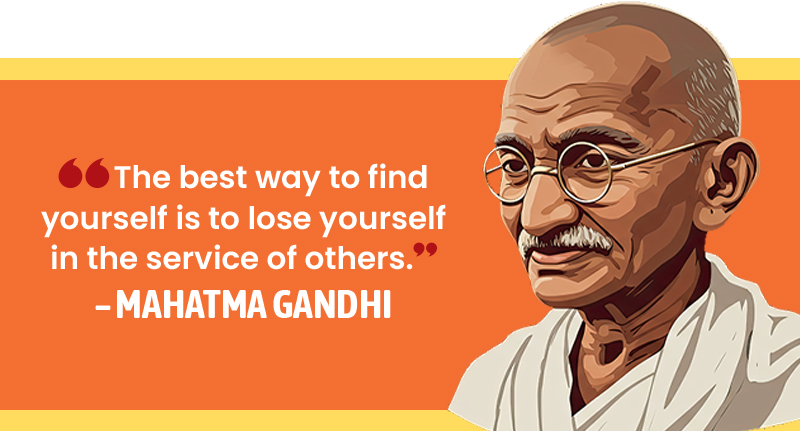
ACTIVITY: India, My Country
How well do you know India’s freedom struggle?
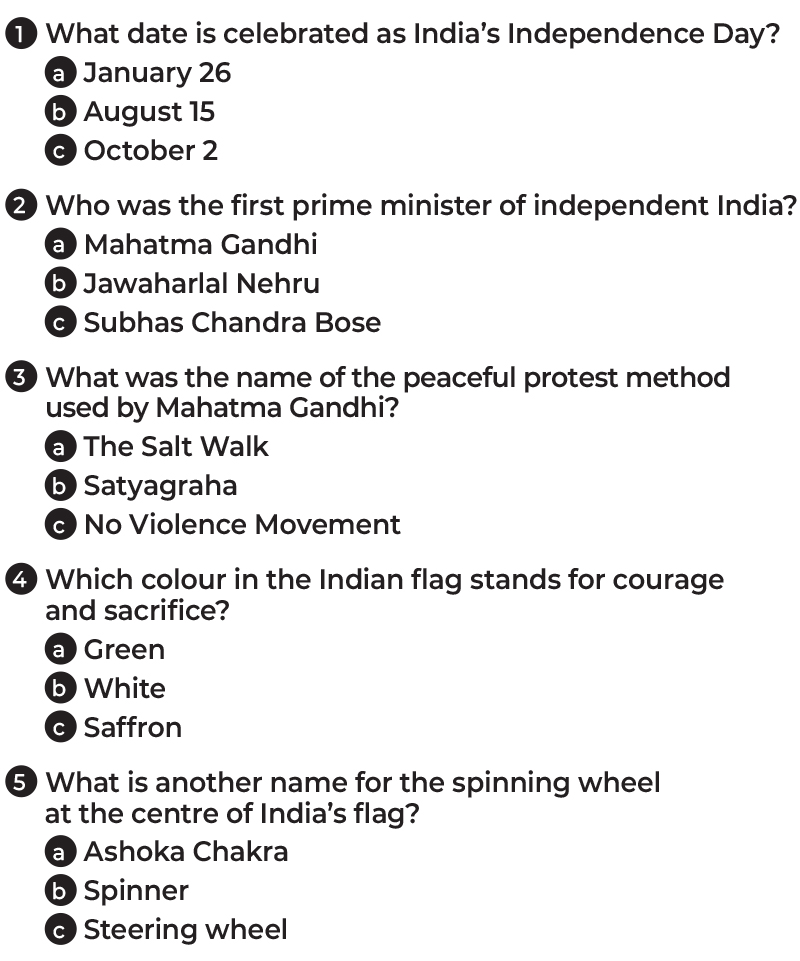
Lesser-Known Facts & Unsung Heroes
Non-violence was not the only approach to resisting British rule in India. Revolutionaries like Bhagat Singh and Chandra Shekhar Azad sacrificed their lives for their motherland and inspired others too. ‘Desh Bhakti’ or patriotism is all about such heroes. The story of India’s freedom struggle remains incomplete without remembering the countless lesser-known warriors. They dedicated themselves selflessly without the fear of punishment, cruelty or even death to overthrow the British.
Kartar Singh was just 15 when he went to the US for further studies in 1912. He was humiliated by immigration officers for being an Indian and he witnessed discrimination towards fellow Indians too. He realised that they were all treated as slaves since India was ruled by the British. This treatment transformed Kartar Singh’s life. He connected with other Punjabi immigrants from the US and Canada and formed the Ghadar (armed rebellion) Party in June 1913. The other members of the Ghadar Party, Lala Hardayal and Sohn Singh Bakhna, also worked tirelessly to encourage other immigrants and fuel revolutionary ideas through speeches, newspapers and more. In 1914, Kartar Singh relocated to India to plan a revolt against the British. Unfortunately in 1915, he, along with six other rebels, was martyred for being a freedom fighter.
Peer Ali Khan was a bookseller by profession and used to distribute anti-British pamphlets. During the first war of independence, he was at the forefront of the Patna revolt. He was captured by the British and sacrificed his life like a true patriot.
Khudiram Bose was 18 when he was drawn towards the Quit India Movement. He and his fellow revolutionary, Prafulla Chaki, planned to attack a British judge, but their mission failed. Chaki took his own life to avoid being captured, but Bose was arrested and sacrificed his life with courage and a wide smile on his face. He became one of the youngest martyrs of the freedom struggle.
Jatindranath Mukherjee, popularly known as Bagha Jatin, played a key role in the German Plot. He planned an armed revolution by collaborating with the Germans. However, the mission failed, leading to a gunfight in which Jatin was injured. He continued to fight until he was martyred. His last words to his British assailants inspired many others, “You can only kill one Jatindranath, but many will rise.”
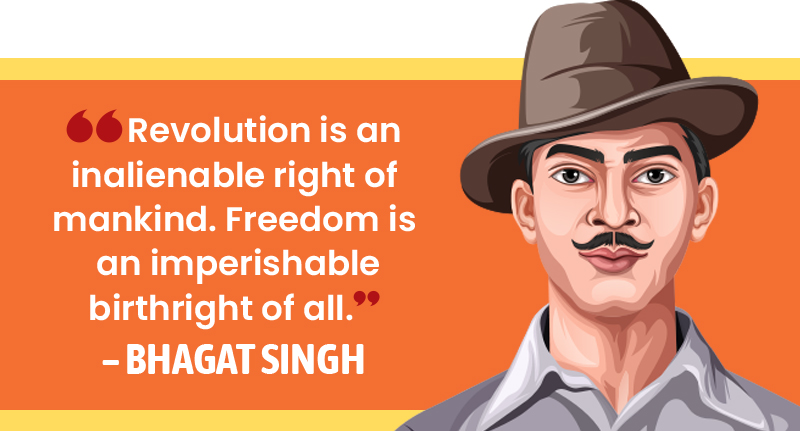
The Women Warriors of Indian Independence
Indian women actively participated in the freedom struggle and demonstrated great valour and patriotism. Besides Sarojini Naidu and Kasturba Gandhi, many other women activists worked at the grassroots level. They played crucial roles in organising protests, preparing meals for revolutionaries, hiding men and women to protect them, conveying secret messages to activists, running underground networks and facing severe punishments.
Usha Mehta used to run a secret radio station.
Annie Besant and Aruna Asaf Ali inspired fellow countrymen through their powerful speeches, writings and political activism, leading the way for active participation in the movement and becoming symbols of women’s strength and resistance.
Rani Gaidinliu, a political leader from Nagaland, led the Heraka Movement in the north-east of India. She was a teenager when she led her first revolt against British authorities and she went to jail multiple times. Post-independence, she worked for the upliftment of north-eastern communities and received many awards for her contributions.
Kanaklata Barua was another fearless young woman from the north-eastern state of Assam. In 1942, she participated in a procession with national leaders to hoist the national flag at a British police station, Gohpur Thana. She was shot dead when the policemen opened fire. However, in her dying moments, she didn’t let go of the flag to ensure that it never touched the ground.
Lakshmi Sahgal, or Captain Lakshmi Sahgal, was a doctor by profession. She joined Netaji Subhas Chandra Bose in the 1940s and commanded the Rani of Jhansi Brigade, an all-female regiment of the Indian National Army (INA). She trained women to fight alongside men on the battlefield.
Another prominent lady was Matangini Hazra, who is fondly remembered as Gandhi Buri. She was a revolutionary who joined the freedom movement in her 60s. In 1942, she led a protest in Tamluk, Bengal. She was reciting ‘Vande Mataram’ holding the national flag when British officials fired at her. Despite being shot, she kept moving with the flag in her hands until one bullet finally shot her dead and she became a martyr for the freedom struggle.
In spite of limited transportation, poor communication systems and the British government’s hostility towards revolutionaries, the way these activists worked towards India’s independence is beyond imagination.
Role of Literature
The freedom struggle involved people from all walks of life—rich and poor, men and women, the old and the young, across all castes and religions alike. Regardless of whether the approach was violent or non-violent, literature played a major role. Literature also contributed towards the foundation for a stronger and more unified nation. Many poets, philosophers and writers are remembered for their innovative works, motivational stories and poems, and for documenting their anguish over the partition of British-ruled India. Their writings not only inspired the masses, but are also considered India’s literary heritage.
Rabindranath Tagore instilled a sense of patriotism among Indians through his poetry, songs and essays. His composition, ‘Jana Gana Mana’, which later became the national anthem of India, was his tribute to the nation and reflects his love for the country.
Likewise, Mahatma Gandhi’s writings, such as ‘Hind Swaraj’ in 1909 and ‘The Story of My Experiments with Truth’, are noteworthy works that highlight his principles, vision for an independent India and anti-colonialism.
Jawaharlal Nehru’s writings, ‘The Discovery of India’, ‘Letters from a Father to His Daughter’ and ‘Glimpses of World History’, are still appreciated by many.
The great orator and writer Subhas Chandra Bose, along with the fearless revolutionary Bhagat Singh, played a pivotal role in inspiring the Indian youth to actively participate in the freedom movement.
The poems written by women, like Sarojini Naidu and Amrita Pritam, reflect the pain and struggles of independence and partition.
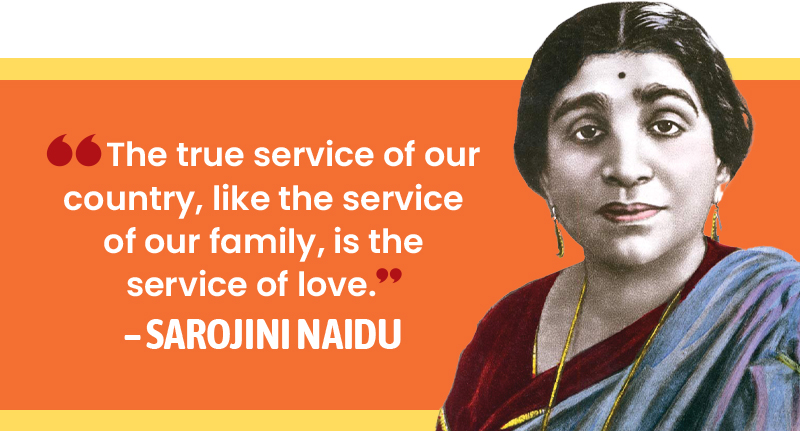
The Midnight of August 14-15, 1947
Amidst other protests, the tension between Hindu and Muslim communities intensified. That unrest also strained British efforts to rule the country. Eventually, the British were overthrown. However, the separation between Hindu and Muslim communities became inevitable and led to the formation of two free countries—India and Pakistan. As a result of this partition, many friends and families were separated. The brighter side was that India gained independence on August 15, 1947.
ACTIVITY: Design Your Own Freedom Flag!
Draw your own flag that shows what you feel when you think about freedom. Use three colours and tell us what they represent.
Nation Building After Independence
India became a free country but with a fragmented political structure. There were approximately 565 independent princely states, which were not under the British government. The ‘Iron Man of India’, Sardar Vallabhbhai Patel, played a key role in India’s unification. His leadership and vision, knowledge of India’s political structure and cultural sensitivity ensured the consolidation of these states and one unified nation.
India’s leaders were setting the context to build something better and bigger by supporting free expression of opinion, encouraging press and print media, uplifting the weaker sections of society, organising elections to introduce and select representatives, emphasising adult voting and similar political reforms. These activities were the stepping stones to a liberal society, a secular nation that allows freedom of speech, equality and a democratic system—the principles that are reflected in India’s constitution.
The chief architect of our constitution was Dr BR Ambedkar. He was a staunch supporter of democratic governance in India. He was an advocate of human rights and was responsible for drafting the longest-written national constitution in the world—the Constitution of India. He believed that true greatness lies in the service of others. He was also associated with the struggle against caste discrimination and the removal of untouchability.
The leaders of the national movement taught people to resist the concept of imperialism and not the people (British) themselves. This helped India to build a rapport with other countries and develop a progressive and non-racist outlook— an approach that still influences its foreign policy. Even today, some of our current policies are the legacy of the anti-imperialist struggle.
The national leaders of early India also focussed on industrialisation with the motive of economic development. For example, Gandhi’s policies, such as abolishing untouchability, promoting national education, working towards Hindu-Muslim unity, encouraging khadi and boycotting foreign goods, were rooted in the same principles that continue to guide the nation to this day. Hence, Narendra Modi’s ‘Make in India’ is not a new concept, but a revival of old strategies, aimed at strengthening the country’s economic growth.
Many industrialists also came forward to support the national movement. They shared a common goal—an independent, secular and self-reliant India, a country with a more outward-looking approach and a strong international outlook.
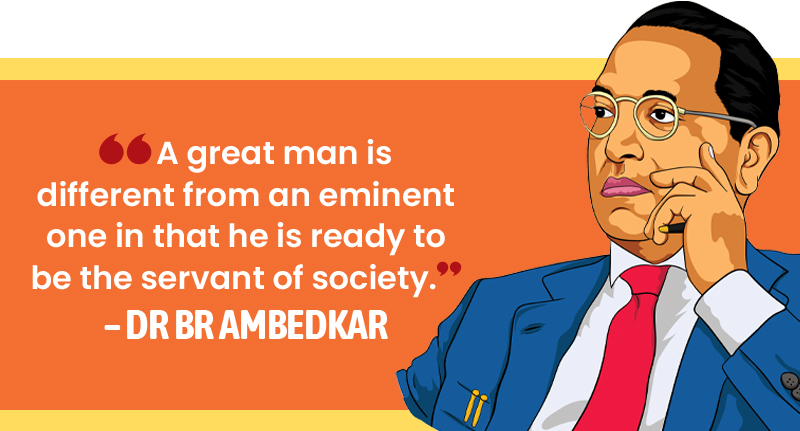
The Visionaries & Reformers
If you love strawberries, you’d know that it was the Tatas who introduced the yummy red fruit and its cultivation in Mahabaleshwar. Nusserwanji Tata had an entrepreneurial mindset; he started his cotton mills venture in the 1880s. Later generations of his family worked towards growing their multifaceted business and educational institutes. The vision and foresight of the Tatas not only helped them to seize business opportunities, but also supported the various aspects of India’s development, focussing on economic growth, infrastructure, education and social progress while staying resilient during British rule. Currently, the Tata Group is India’s largest business conglomerate.
Ghanshyam Das Birla, who built his business empire despite the impact of colonialism, provided financial aid to various parties for the freedom struggle. He also played a crucial role in establishing the Federation of Indian Chambers of Commerce and Industry (FICCI), which has been empowering Indian trade since 1927. Post-independence, he became the founder of the prestigious BITS Pilani university of science and engineering.
The foundation of the Bajaj group, an Indian multinational conglomerate, was laid down by Jamnalal Bajaj, in 1926. He was Gandhi’s follower and worked towards the development of khadi and village industries and focussed on women’s education. He strongly supported the Swadeshi movement and hence was instrumental in India’s economic progress.
Godrej Group, one of India’s oldest and leading conglomerates, also supported the Swadeshi movement. Ardeshir Godrej and his brother Pirojsha Godrej started manufacturing locks and almirahs, beating out British locks. Ardeshir Godrej donated a huge sum of money in 1921 towards the Tilak Swaraj Fund, which was working for the welfare of society by fighting against caste discrimination and ending poverty among Indians.
The contributions of these visionaries in supporting the freedom struggle and nation-building is inspiring, indeed! These brands have contributed to India’s economy from the freedom struggle to its emergence as a global marketplace in their distinct ways.
Modern India
Since India’s independence in 1947, the country has undergone significant changes across multiple sectors. From an agrarian economy to a global IT services hub, the transformation has been remarkable. Besides socio-economic and political changes, India has also witnessed significant progress in the fields of arts, sports, education and healthcare. India’s success stories of nuclear power and space missions are globally recognised. The country has managed to overcome the challenge of slow progress through economic expansion. As of August 2025, India has overtaken Japan to become the fourth-largest economy in the world, behind only the United States of America, China and Germany.
India’s Journey of Growth & Transformation
In the past decade, India has moved beyond its era of stagnation, the dark era. Various measures have been taken to encourage digitalisation, a cashless economy and curbing black money. The unforgettable COVID-19 phase, and how India navigated through those chaotic times, shows its resilience and power.
To boost the economy and promote self-reliance, the government has encouraged local manufacturing of goods by reviving strategies like ‘Made in India’. Multiple items are placed under the negative import list to avoid the import of foreign goods. This has also given rise to the start-up trend and innovative strategies.
India has also emerged as a global space power. Incredible milestones, such as Chandrayaan-3 and Aditya-L1, showcase the country’s significant advancements in space technology and exceptional engineering skills.
In the sports segment, Indian athletes, including Paralympic champions, have won numerous medals and put up extraordinary performances. This success is due to improved infrastructure, a better sports ecosystem and strong government support. Of course, the athletes’ passion, persistence and training are the key reasons for their success.
A strong defence capability is our core strength. In May 2025, the terrible attack in Pahalgam in Kashmir, and India’s response to the accused, served as a reminder that India will not tolerate any interference with its sovereignty. While the attack made world headlines, the truth is that the whole nation stood united once again to protect the legacy that belongs to all Indians. We proved our strength, unity and resilience once again!
What does independence and living in a free country mean to you? Is it about digitalisation, women’s empowerment in rural areas, the use of technology and innovative educational methods in remote areas or the ability to make a positive impact on the world through the use of social media? Think about it as we get ready to celebrate our 79th Independence Day.
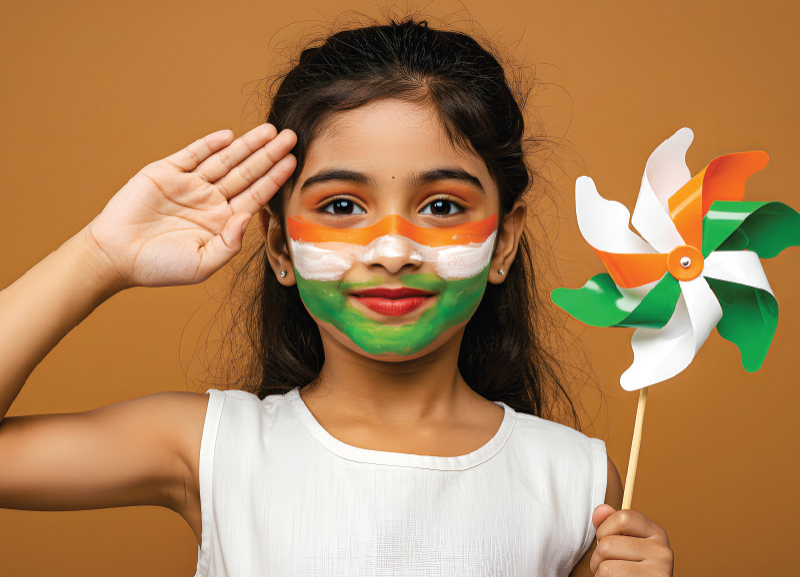
REFLECTION: My Wish for India
Write 2-3 sentences on your hopes for India’s future.
My wish for India is: _____________



